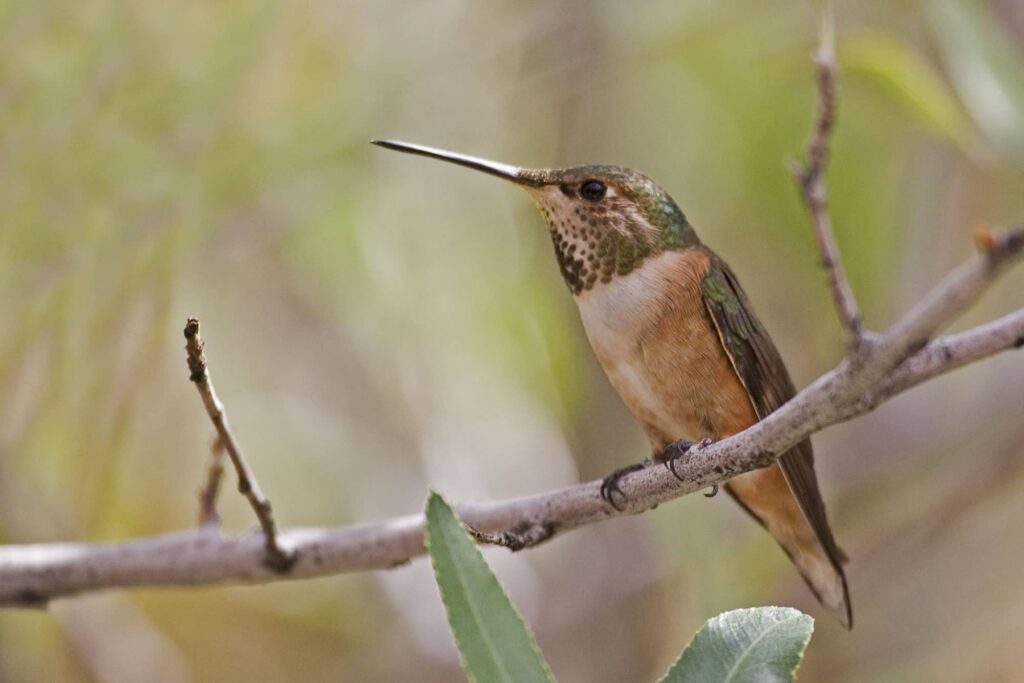Alabama, a state rich in biodiversity, is home to a wide variety of different habitats and ecosystems, including over 132,000 miles of streams and rivers. With abundant warm water sources and a tropical climate supporting diverse vegetation, it’s no wonder that birding in Alabama is so interesting.
Around 420 different bird species spend part of the year in Alabama. Of these, five different hummingbird species can be found in Alabama, from the mountainous valleys and ridges of the Appalachians to the coast of the Gulf of Mexico.
Some of these wild hummingbird species are quite commonly seen, while others are rare sightings. Some breed in the state, while others only visit on their migratory visit. If you’re hoping to catch a glimpse of hummingbirds as they pass through, read on to find out what you should be looking for.
Hummingbird Species in Alabama
Black-Chinned Hummingbird
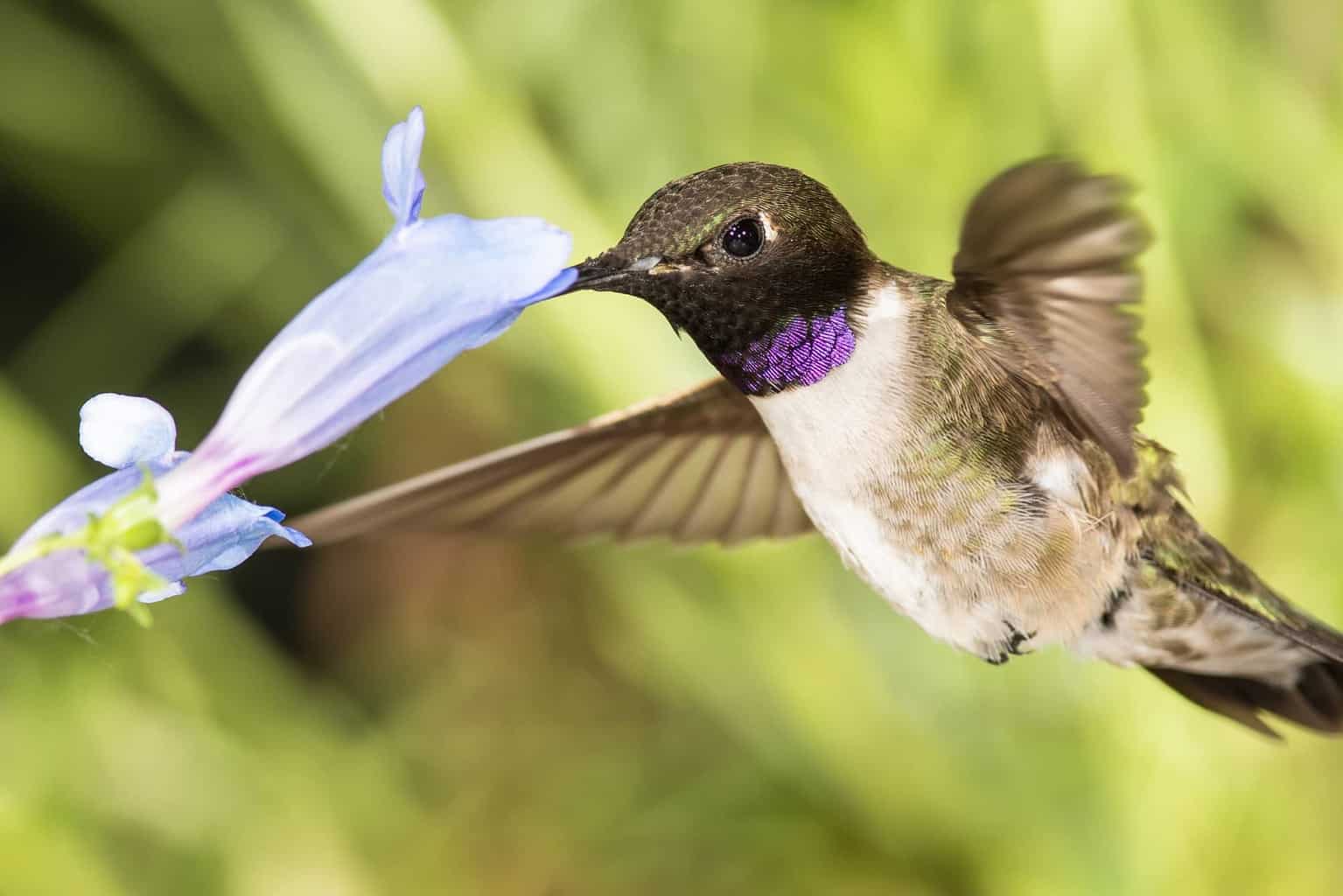
- Scientific name: Archilochus alexandri
- Length: 2.5 – 3.75 in
- Weight: 0.1 – 0.2 oz
- Wingspan: 4 in
Description:
These long, slender-bodied hummingbirds get their name from their long, black bills. Above that, and on their flanks, their feathers are a dull green color with a metallic sheen, and white below.
Males have a black head and an iridescent purple band across the throat. Black-Chinned Hummingbird females are duller with green flanks but lack the black head and purple throat patch. Males have forked tails with black tail feathers, while females have dark, rounded tails.
Additional Information:
This migratory hummingbird species can be seen in a wide range of habitats, from deserts to mountainous forests. They breed in the western US and spend the winter season in Central America and along the Gulf Coast, when they can be seen in Alabama.
They frequent meadows, woodlands, mountains, orchards, and chaparral, but also visit urban parks with hummingbird feeders and gardens — especially where there is flowing water.
They are very closely related to Anna’s, Costa’s, Lucifer, and Broad-tailed Hummingbird — in fact, they frequently cross-breed with Anna’s Hummingbird, creating a hybrid type of hummingbird called Trochilus violajugulum.
Black-chinned Hummingbirds feed on nectar from plants that are flowering. They can hover with pinpoint precision while they sip from tubular blooms or their favorite nectar feeders.
Ruby-Throated Hummingbird
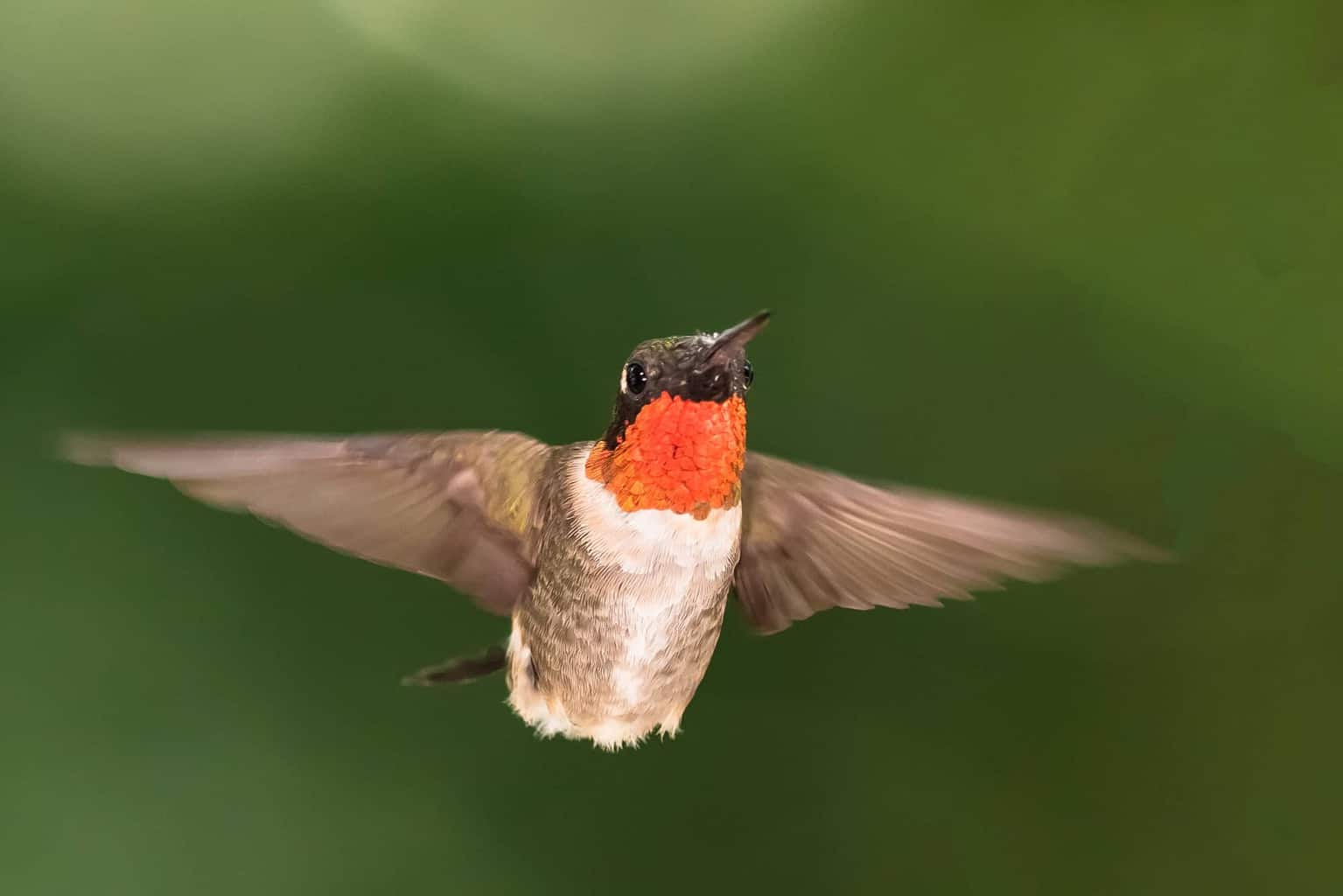
- Scientific name: Archilochus colubris
- Length: 3 – 3.5 in
- Weight: 0.1 – 0.2 oz
- Wingspan: 3 – 4 in
Description:
This medium-sized hummingbird species is typically bright emerald-to-golden-green on the back and crown, with light gray underparts. Males have a black mask and a red, iridescent throat, which may appear black in some lights and at certain angles.
Males also have a short, forked tail with black tail feathers. Female Ruby-throated Hummingbirds have buffy flanks, white underparts, and a dusky mask.
Additional Information:
Ruby-throated Hummingbirds rely on a variety of habitats: meadows, open woodlands, scrub, forest edges, grasslands, citrus groves, parks, hedgerows, and urban gardens.
Like other kinds of hummingbirds, they feed on sugar and nectar from plants, such as morning glory, red buckeye, bee balm, jewelweed, honeysuckle, cardinal flower, and trumpet creeper.
These hummingbirds also rely on tree sap as an energy source and will hunt small insects while flying. Fruit flies, mosquitos, gnats, and small bees are their favorites. They are also a common guest among hummingbird feeders and will enjoy a homemade hummingbird nectar solution if it’s set out for them.
During the breeding season, the Ruby-throated Hummingbird breeds in deciduous trees, such as oak, birch, poplar, hornbeam, or hackberry. Their nest is tiny, only around the size of a large thimble.
Broad-Tailed Hummingbird
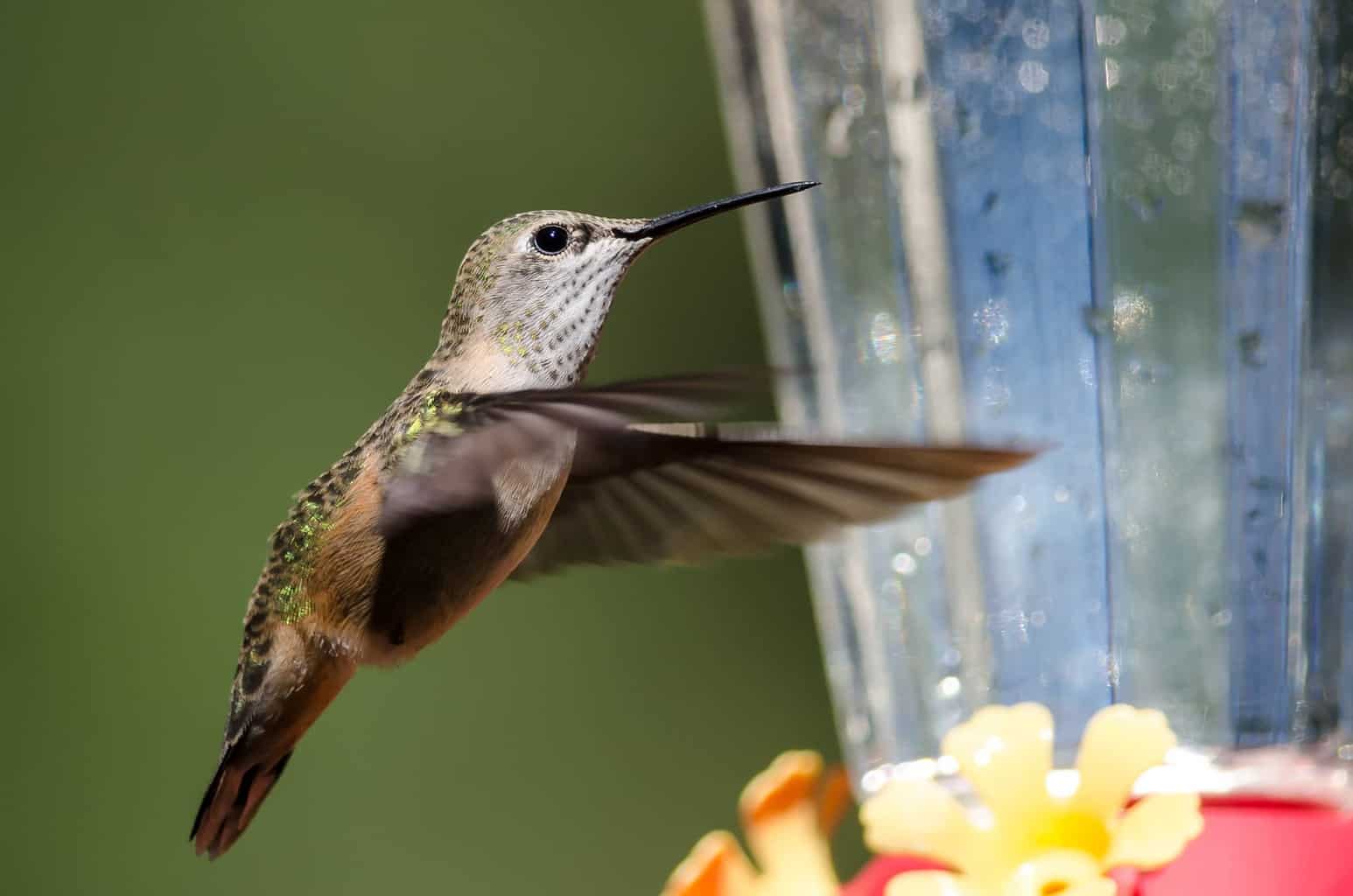
- Scientific name: Selasphorus platycercus
- Length: 3.3 – 4 in
- Weight: 0.1– 0.2 oz
- Wingspan: 5.25 in
Description:
This beautiful hummingbird sports a white breast with iridescent green above and buffy green flanks.
Males have metallic magenta throat, and the female Broad-tailed Hummingbird has a pale ring around her eyes and green spots on her throat and cheeks.
Additional Information:
Broad-tailed Hummingbirds range from the highlands of the western US and Canada during the warm summer months, moving all the way to Mexico and Guatemala for their winter homes. This species of hummingbird is easily recognized by the common sound of their sharp, repetitive “cheet cheet” call.
These medium-sized hummoingbirds breed at high elevations in foothills and mountainous valleys with shrubland and forests of aspen or spruce, foraging for native nectar-filled flowers in open meadows and grasslands.
Broad-tailed Hummingbirds look for brightly colored tubular flowers, indicating high nectar production. They also feed on insects while in flight.
Broad-tails lay two eggs at a time, and the female hummingbirds care for the eggs and raise the young alone. They do not form pair bonds, and males will mate with multiple females per breeding season.
Calliope Hummingbird
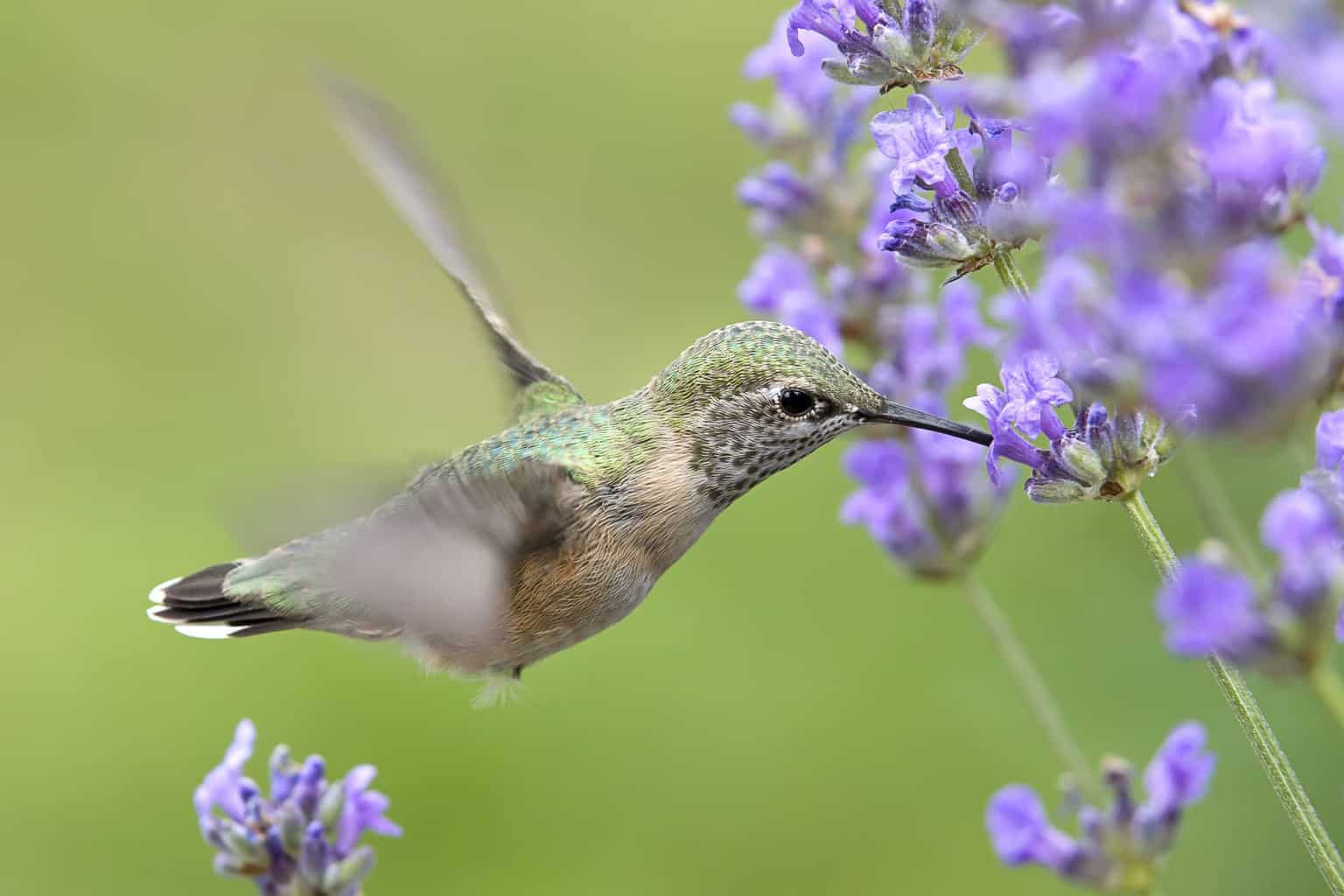
- Scientific name: Selasphorus calliope
- Length: 3.1 – 3.5 in
- Weight: 0.07 – 0.11 oz
- Wingspan: 4.3 in
Description:
Calliopes are primarily white hummingbirds with a glossy green back and crown.
Males have green flanks, a dark tail, and magenta bursts of color on the gorget. Females have pinkish flanks, a dark tail with white tips, and dark streaks on the throat.
The wings and tail are both short, with the wings hardly extending past the tail when folded. They have a relatively short, thin bill
Additional Information:
Calliope Hummingbirds are absolutely tiny. In fact, they are the smallest bird native to Canada and the US as well as the smallest migratory species.
During the fall, their southward migration pattern takes them through the Rocky Mountains, where the subalpine forests and mountainous meadows provide a welcome nectar source for hummingbirds, halting the Calliopes’ travels. During the spring migration season, as they travel northward along the coast, Calliope Hummingbirds rely on lower coastal forests, coastal scrub, and desert washes as places to refuel.
Because they are so tiny, they can sip nectar from plants and flowers that are much too small for other hummers. They also enjoy perching on branches and swooping out to catch small spiders and insects.
Rufous Hummingbird
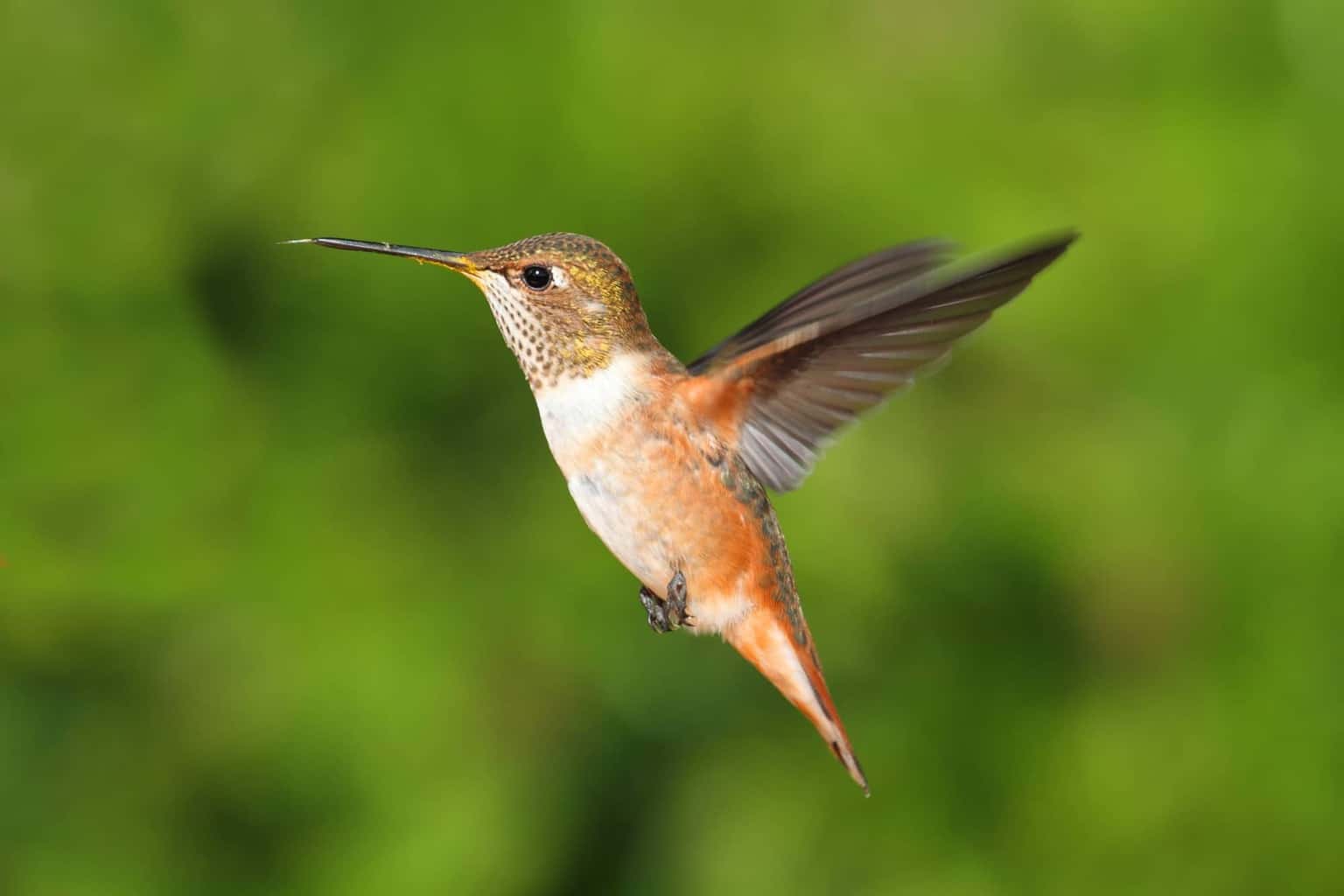
- Scientific name: Selasphorus rufus
- Length: 2.9 – 3.6 in
- Weight: 0.1 – 0.2 oz
- Wingspan: 4.25 in
Description:
Rufous Hummingbirds can be distinguished from other usual hummingbirds in Alabama by their unique backs. Their wings are relatively short, not reaching the end of the tail. The beak is relatively long, thin, and almost straight.
Males have an iridescent red gorget (throat) with a vibrant orange belly and back.
Females have green backs, white underparts, and a rufous wash on their flanks. They also have a less distinctive gorget than their male counterparts, but an orange-red glimmer can be seen.
Males can be distinguished by their pointed tail feathers, whereas females have more rounded tails. Interestingly, the male Rufous Hummingbird has a shorter wingspan than the Rufous Hummingbird female, which causes quite different behavior.
Additional Information:
The Rufous Hummingbird is famous for being one of the smallest migratory birds in the world. They journey over 4000 miles, a journey farther than that of even the largest hummingbird and an especially amazing feat for such a tiny bird.
In Alabama, they can be seen during the cooler months of the year after late summer’s end. They rely on native flowers for nectar and eat small insects on the wing for protein.
You can attract more of these hummers to your hummingbird garden by setting up a quality hummingbird feeder and planting lots of tubular flowers, lilies, larkspur, mint, Indian paintbrush, columbine, scarlet gilia, and penstemons. Hummingbirds are drawn in by stunning color patches
Conclusion
Each of the five hummingbird species you can see in Alabama are breathtaking in their own way. Many who enjoy hummingbird watching can do so with endless fascination as they go about their daily activities, whether watching a backyard feeder from your kitchen window or peeking from a bird hide in a National Forest.
Alabama’s diversity of hummingbirds is just one more thing that makes this state so special. There is always something interesting to see.
For more birds to be on the lookout for, check out this list of the birds in Alabama.

